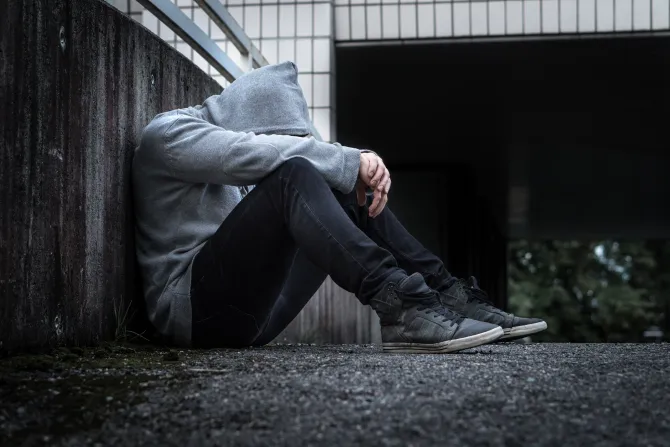Denver, Colo., May 2, 2023 / 14:30 pm
Loneliness is a risk factor for many serious — even deadly — health conditions, and the antidote is social connection like that found in religious groups, the U.S. Surgeon General has said in a new report.
“Loneliness is far more than just a bad feeling — it harms both individual and societal health. It is associated with a greater risk of cardiovascular disease, dementia, stroke, depression, anxiety, and premature death,” Surgeon General Dr. Vivek H. Murthy said in a letter introducing his new report, “Our Epidemic of Loneliness and Isolation.” The advisory report discusses “the healing effects of social connection and community.”
“The mortality impact of being socially disconnected is similar to that caused by smoking up to 15 cigarettes a day, and even greater than that associated with obesity and physical inactivity,” Murthy said. “And the harmful consequences of a society that lacks social connection can be felt in our schools, workplaces, and civic organizations, where performance, productivity, and engagement are diminished.”
Organized religion fosters community
In 2018, only 16% of Americans reported feeling very attached to their local community.
The surgeon general’s report notes the important role of religion in fostering social connection.
“Religious or faith-based groups can be a source for regular social contact, serve as a community of support, provide meaning and purpose, create a sense of belonging around shared values and beliefs, and are associated with reduced risk-taking behaviors,” the surgeon general’s report said.
However, religious affiliation and participation among U.S. adults have declined since the 1970s. According to various surveys, the year 2020 marked the first time that fewer than half of Americans — 47% — said they belonged to a church, synagogue, or mosque. This is down from 70% in 1999.
“As a consequence of this decline in participation, individuals’ health may be undermined in different ways,” the report said.
Loneliness is more common among young adults, though older adults have the highest rates of social isolation. Both loneliness and social isolation are more common among people with poor physical or mental health, the disabled, the financially insecure, and single parents.
Chronic loneliness and social isolation can increase the risk of dementia or self-harm in older adults. Social connection appears to have a protective effect against depression and, especially for men, death by suicide. Social connection overall helps individuals’ quality of life and outcomes in education, employment, and financial areas.
Connection is harder to find
Since at least the 1970s, membership in organizations that help community connection has declined “significantly.” Religious membership is not the only group to decline, as membership in clubs and labor unions has declined as well. These are parts of communities’ “social infrastructure” that shapes their “social capital,” which the report defines as the resources that individuals and groups can access through their social networks. The state of physical infrastructure, such as libraries and parks, and transportation and housing policies, can also affect community life.
Group belonging, such as groups and relationships with those most like oneself, can provide a person with support and resources to prevent or reduce loneliness and socialization as well as to improve their well-being, the report said. Connections to people outside of one’s group also improve health and well-being.
The surgeon general’s report places religious groups among volunteer organizations, sports groups, and member associations that help bring people together. Communities whose members are “more connected” have better population health, resilience in the face of natural disasters, community safety, economic prosperity, civic engagement, and representative government.
The negative effects of cohesive communities
(Story continues below)
There can be downsides to strong social connections, including polarization, according to the report. Gangs, extremist groups, or other harmful groups are negative examples of strong communities. People in highly cohesive groups can sometimes show distrust and rejection of outsiders and destructive favoritism toward group members. There can be pressures to conform and “high costs” like rejection or ostracism for failure.
“While high cohesion and conformity to group norms can be healthy and productive in many cases, among some groups, these social pressures may justify, rationalize, or encourage unhealthy, unsafe, or unfair behaviors such as binge drinking, violence, and discrimination,” the report said.
The pandemic’s silver lining
The decline in social connection was a decades-long trend before the COVID-19 pandemic. Declines in the marriage rate and household size indicate declines in the “critical structural elements of social connection.” Americans have fewer close friends and fewer in-person encounters with others.
The pandemic itself and the public health measures in response made the absence of social connection particularly clear to the public and to health authorities. The benefits of community participation were also a factor in the pandemic response: More than 120 million American individuals informally helped others from September 2020 to September 2021, while more than 60 million Americans formally volunteered as part of an organization.
“While profoundly disruptive in so many ways, the COVID-19 pandemic offers an opportunity to reflect more deeply on the state of social connection in our lives and in society,” the report said. “As we emerge from this era, rebuilding social connection and community offers us a promising and hopeful way forward.”
The surgeon general called for investments in addressing social connection as a health problem, comparing the fight against loneliness and isolation to public health efforts against tobacco use, obesity, and drug addiction.






